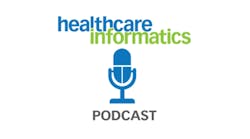Since the release of the final meaningful use rule last month, much attention has focused on the ability of heath providers to meet the benchmarks under the HITECH Act. And rightly so: hospitals have plenty of work to do before bringing management of their electronic health records (EHRs) into the 21st century.
It’s important to keep in mind that meeting the final rule’s requirements is not an end in itself. As noted by National Coordinator for Health Information Technology David Blumenthal, M.D., in the announcement of the final rule last month, “Adoption of meaningful use of EHRs will help providers deliver better and more effective care, and the benefits for patients and providers alike will grow rapidly over time.”
I hope so. The recent experience of a friend of mine, let’s call him Tom, illustrates how far even large hospitals in one major metropolitan area, New York, have to go in streamlining their EHRs—and how patients get penalized, both in the quality of care and financially, for the inefficiency of the health provider.
Following a regular physical examination, Tom’s doctor, who practices in a large, well-known hospital in Manhattan, recommended that he undergo a CT scan and referred him to a gastroenterologist practicing in an even larger, better-known hospital in Manhattan. Tom duly made the appointment with the specialist, and asked the hospital to forward the test results to the second doctor. The hospital made a copy of the results on a CD and had it delivered via FedEx to his home—at a cost of $50.
More surprises were in store. When Tom went for his appointment at the specialist and personally delivered the CD, that doctor could not open the file to view the results—after trying to open it on two different computers in his office. He then told Tom that he wanted him to undergo an MRI. Tom is now thinking about going to a different gastroenterologist, hopefully one that is more computer savvy.
Apparently, size doesn’t necessarily matter in the quest for more efficient EHRs. Even some very large health providers use the equivalent of the Pony Express to deliver patient records. More to the point, it demonstrates the difference that truly networked EHR can make, both in cost saving and in the quality of care that every patient has a right to expect.

